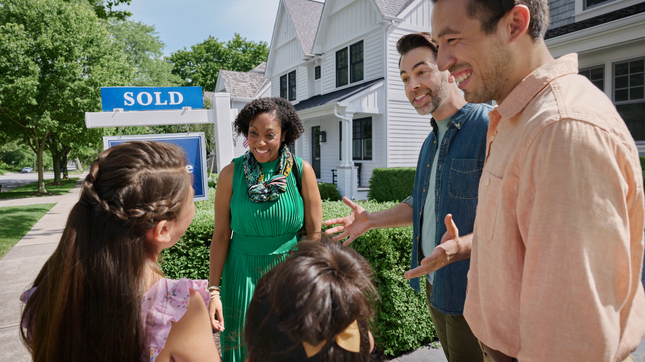Market Trends: Helping Clients Find the Next Neighborhood Hot Spot
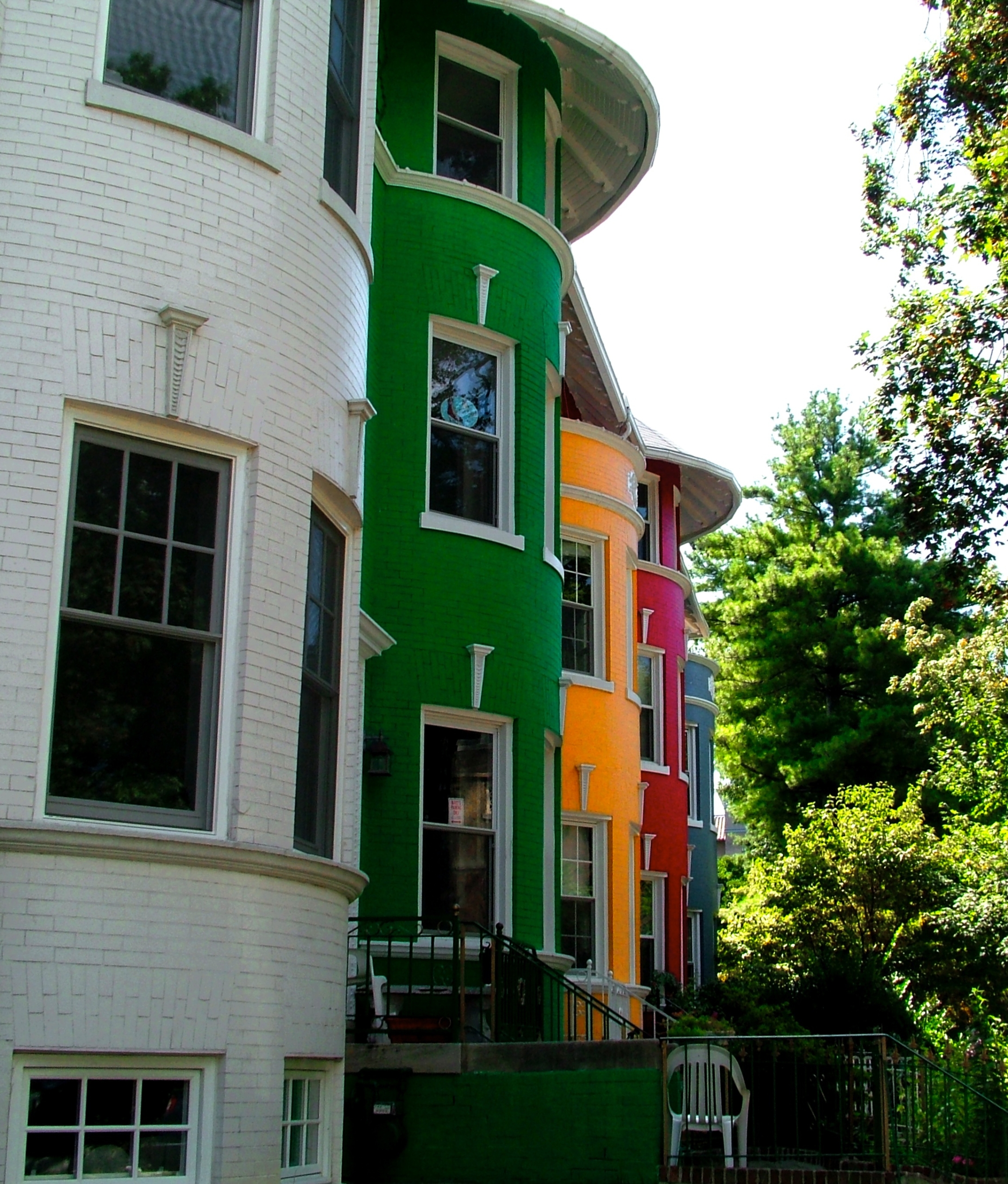
Nancy Robbers
February 5, 2015
4 Minute Read
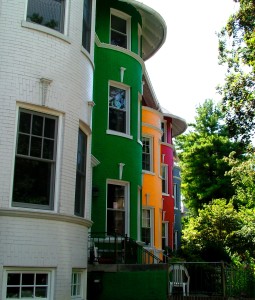
Given a tricked out DeLorean, you could travel back in time and not only tell yourself to purchase certain stocks, you could also pinpoint neighborhoods that, over the years, became the hottest addresses. To date, most of us are still waiting for our future selves to show up with the goods, but in the meantime, there is a way to predict the real estate market that doesn't require a flux capacitor. You just need some local knowledge and a look at the data.
Here are some ways to help your clients find the neighborhoods most likely to appreciate.
On the fringe
It’s true that in most major metros, homes that are close to downtown are—and stay—the most valuable. This is due to a variety of factors mainly due to proximity to work and amenities that downtown home buyers are willing to pay for. Homes in the city center almost always sell for considerably more than those located farther out — nicer or not — because their surrounding neighborhood adds value. As buyers make their way farther out of town, by blocks or by miles, home values typically drop.
According to Zillow CEO Spencer Rascoff and Chief Economist Stan Humphries in their book, “Zillow Talk: The New Rules of Real Estate,” homes located in areas adjacent to downtown often gain value more quickly than city center homes themselves. In other words, over time, the values of downtown homes and the values of homes on the outskirts will get closer and closer. The graph below of Phoenix home price data illustrates the way outlying homes become much more valuable compared to where they started.
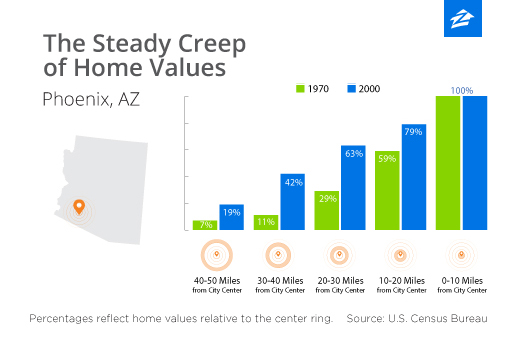
If you build it...
Sometimes hot spots within the perimeter of a downtown area appreciate more quickly than the surrounding neighborhoods. While downtown homes are closest to parks, restaurants and entertainment, the next neighborhood over is a close second because residents there can still enjoy reasonable access to those amenities but without the accompanying exorbitant home prices. How do you identify the next one? Take a look at a neighborhood that has already started to “turn around.”
As more home buyers move into the surrounding neighborhoods, purveyors of the “new cool” — café owners, adventurous chefs and restaurateurs, gallery and club owners — will open businesses to serve the built-in clientele. From there, the cultural explosion of the up-and-coming premier neighborhood will spill over into adjacent ones. In time, the area surrounding such neighborhoods —as long as their residents can access the adjacent, premier neighborhood — will develop more quickly than it would have without the overflow. Rascoff and Humphries call this the “halo effect.”
“Because these surrounding neighborhoods tend to be somewhat underdeveloped, their home values have quite a bit of room to grow,” they write. “Once again, it’s actually a better real estate strategy to buy homes outside of the premier neighborhood.”
The graph below shows the halo effect in New York City and Chicago neighborhoods.
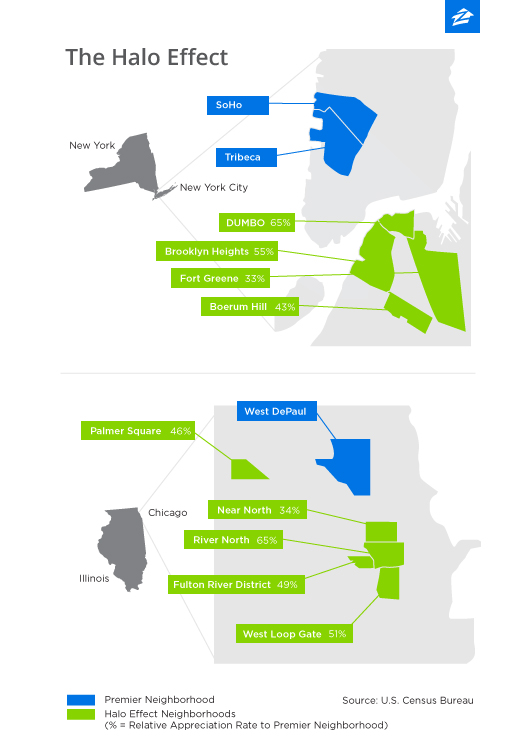
The chicken or the egg?
When historically low-rent neighborhoods attract more and more residents, and cultural amenities crop up to serve them, real estate firms and investors start to pay attention to them as candidates for gentrification. Realizing that people will pay top prices to live there if the housing options were significantly improved, developers snap up buildings and renovate them. New residents and more entrepreneurs arrive in droves and spark the process of gentrification in the rapidly transforming neighborhood. Rents and home values — even those of homes that weren't renovated — go through the roof, and original tenants and that first wave of gentrifying pioneers are pushed out in search of less expensive housing.
While gentrification has both supporters and detractors, there are definite benefits to home buyers who decide to purchase in communities where this process is underway: new investments in roads, schools and parks, not to mention job opportunities and typically safer neighborhoods.
Age isn't just a number
The good news, Rascoff and Humphries explain, is that gentrification is fairly predictable, and its strongest indicator is the age of a neighborhood’s housing stock. The older the average home is, the more likely that neighborhood will significantly appreciate. Sub-par neighborhoods — in which the median home value is at least 10 percent less than the city’s over-all median home value — where most of the homes are more than 40 years old, have a greater chance of faster appreciation than neighborhoods where most of the housing is newer.
One last indicator of the next communities to appreciate is the rate of home ownership by the actual residents of those neighborhoods. Low homeowner occupation in sub-par neighborhoods — where the potential for renovation is high — is a strong indication of a community likely to undergo gentrification.
'If you buy a home in that neighborhood, the odds are that you'll see some major home appreciation coming your way,' Rascoff and Humphries note. 'You just have to sit back and let the future come to you.'
Not all cities or neighborhoods will experience the halo effect or gentrification to the same degree or on the same timeline, so your home buyer clients should understand that investing in those communities yields a long-term payoff. By looking at the data and recognizing the patterns, and using your expertise about local real estate, you can reasonably predict the neighborhoods most likely to significantly appreciate in ten, twenty or even thirty years.
Zillow works for agents
We're here to support you and your clients on their journey home. Discover how we can help grow your business today.
Learn more
